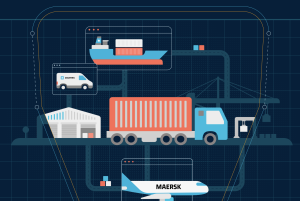 A procurement and supply function that does not have a good understanding of how to identify, mitigate and avoid supply chain risk is itself a significant risk for an organisation.
A procurement and supply function that does not have a good understanding of how to identify, mitigate and avoid supply chain risk is itself a significant risk for an organisation.
This is just one of six internal risk influencers highlighted in a CIPS good practice guide for developing end-to-end supply chain resilience in organisations.
“With the risk landscape getting bleaker, supply chain professionals should be talking more about resilience, any negative impact on how consumers perceive a business can rattle around for years,” said David Noble, CEO of CIPS.
Yet fewer than half of procurement professionals who responded to a CIPS survey always had strategies to mitigate the supply chain risk, and fewer than half felt confident to undertake a cost benefit analysis of the cost associated with a disruption in their supply chain.
According to the report entitled Supply Chain Risk and Resilience, supply chain resilience draws on the best approaches to risk management and business continuity (focusing on proactive measures), which helps to define measures that can build resilience into all stages of a typical supply chain, from start to finish. As well as the risk influences, the process identifies sustainability risks, the business elements that should be assessed (such as cyber security) and the consequences of risk.
The report also breaks down the consequences of risk into three areas – financial, reputational and operational – with some risks, such as finding a supplier using child labour, affecting all three areas.
Reputational consequences alone can lead to a loss of investor confidence, bad media coverage and negative customer experience. This can give competitors an advantage and lead to future recruitment challenges.
An unanticipated break in supply chain delivery can cause delays in both manufacturing and project completion, which in turn can generate excess storage issues, under-utilised staff and contractors, and an inability to meet customer deadlines.
Financial consequences range from cost overruns, penalty payments, a loss of orders and a drop in share price.
Adapted from SupplyManagement


























